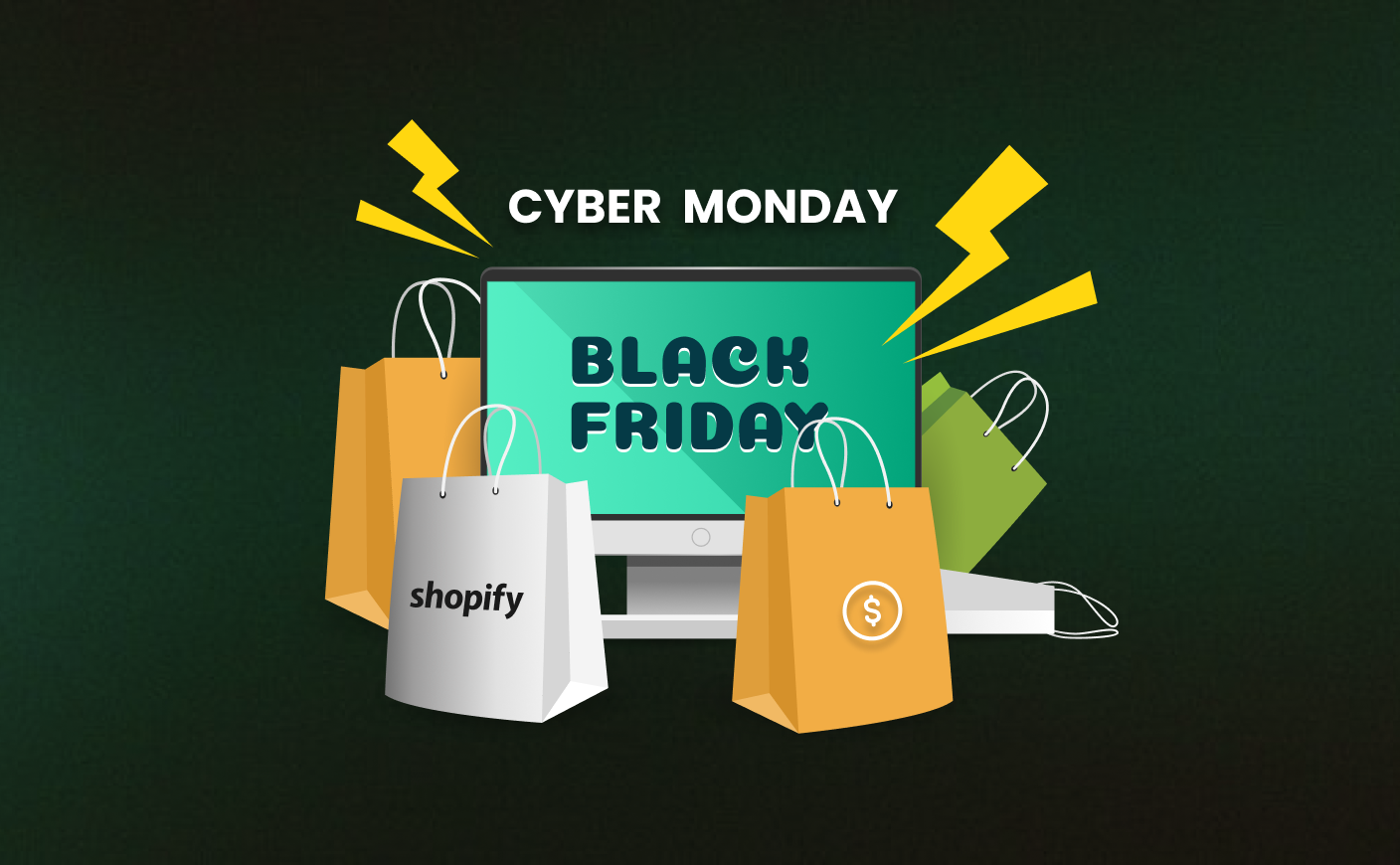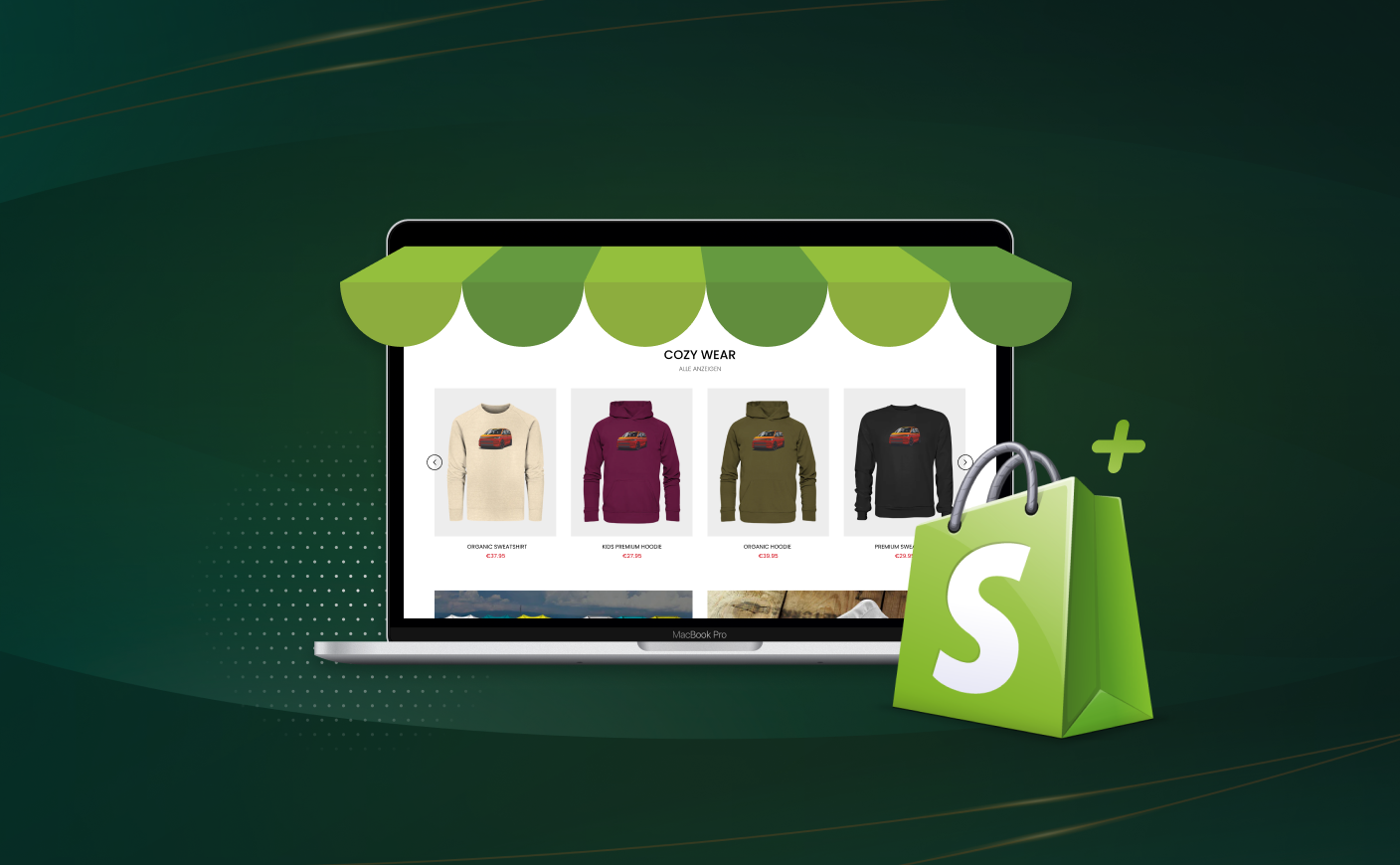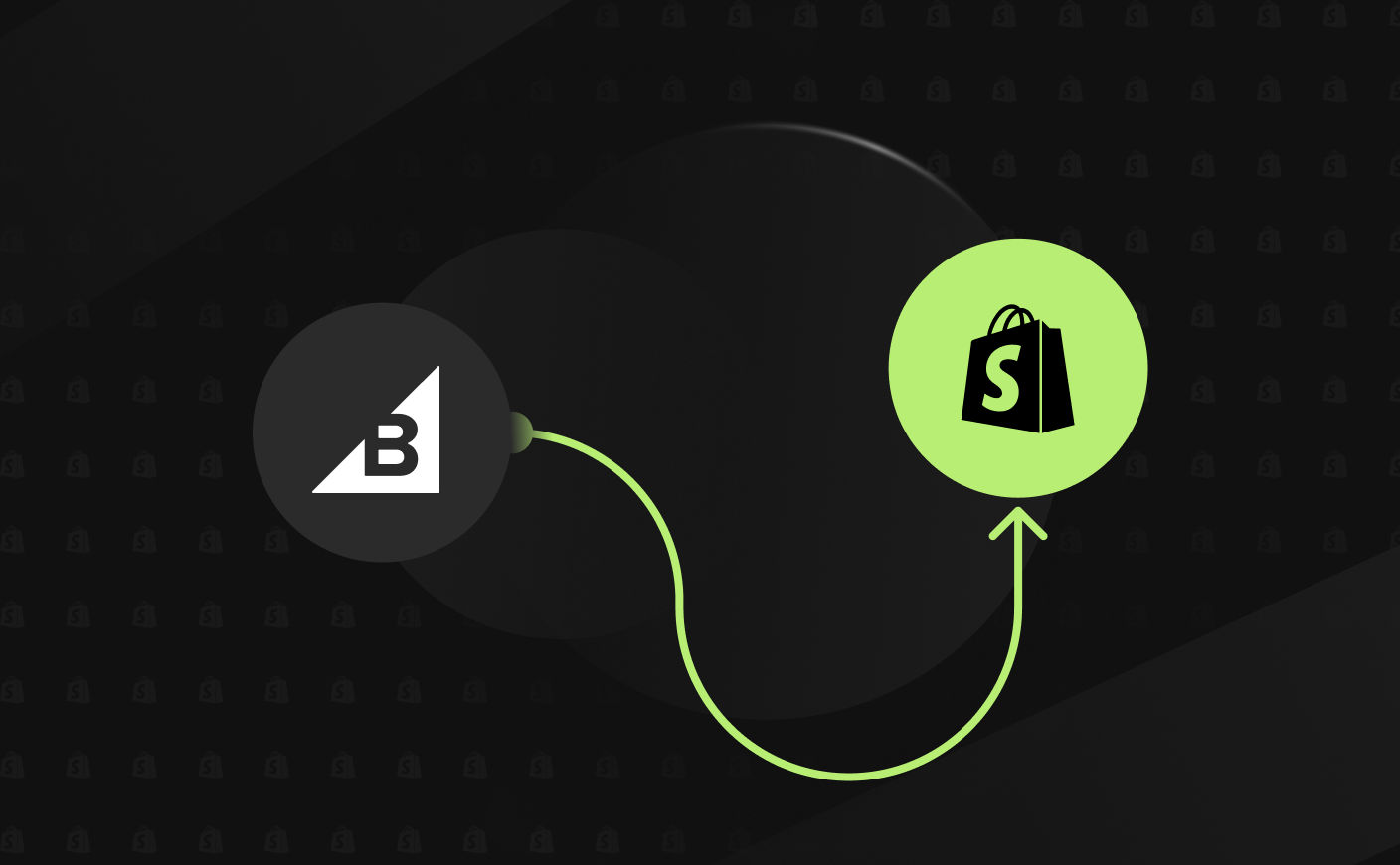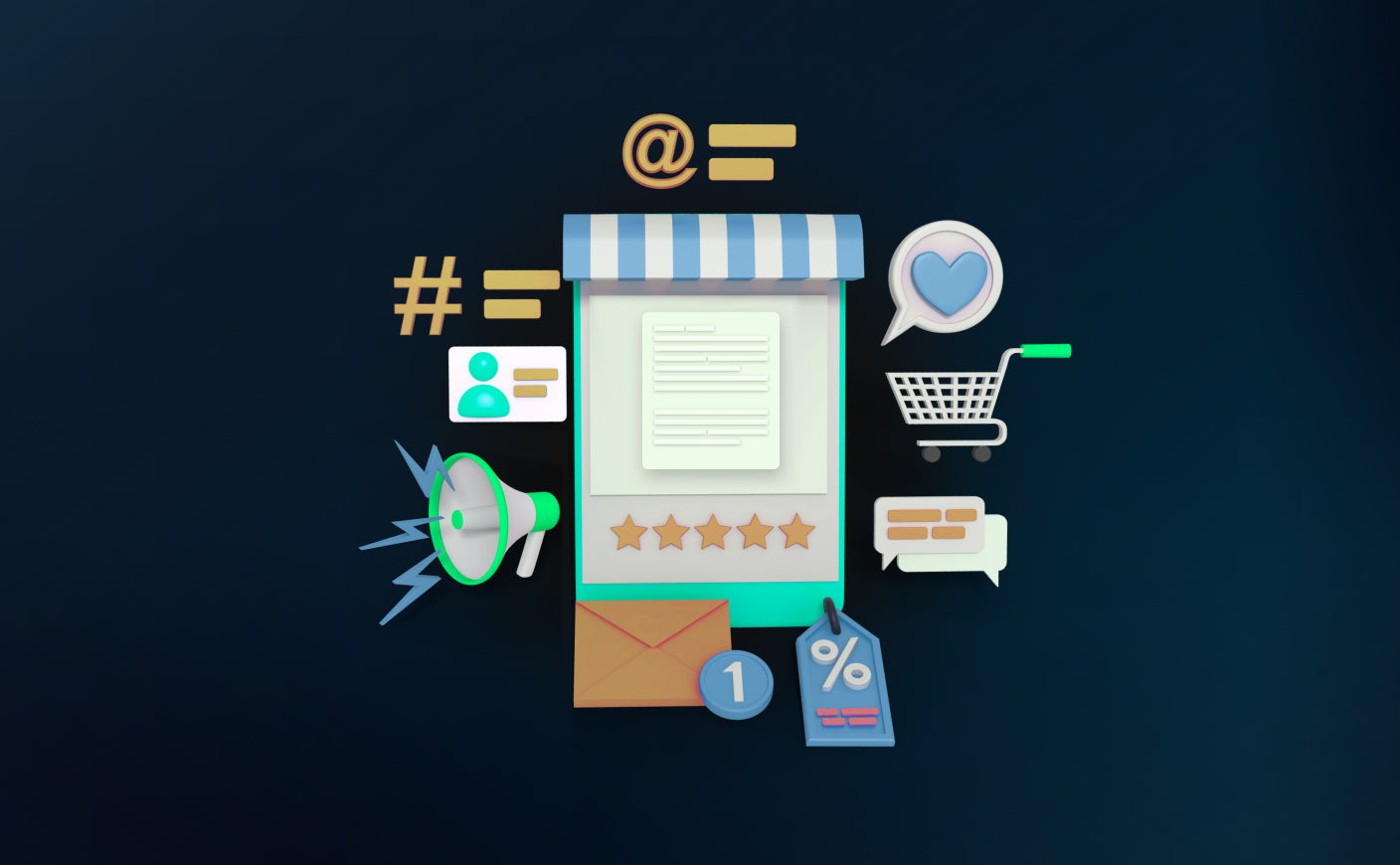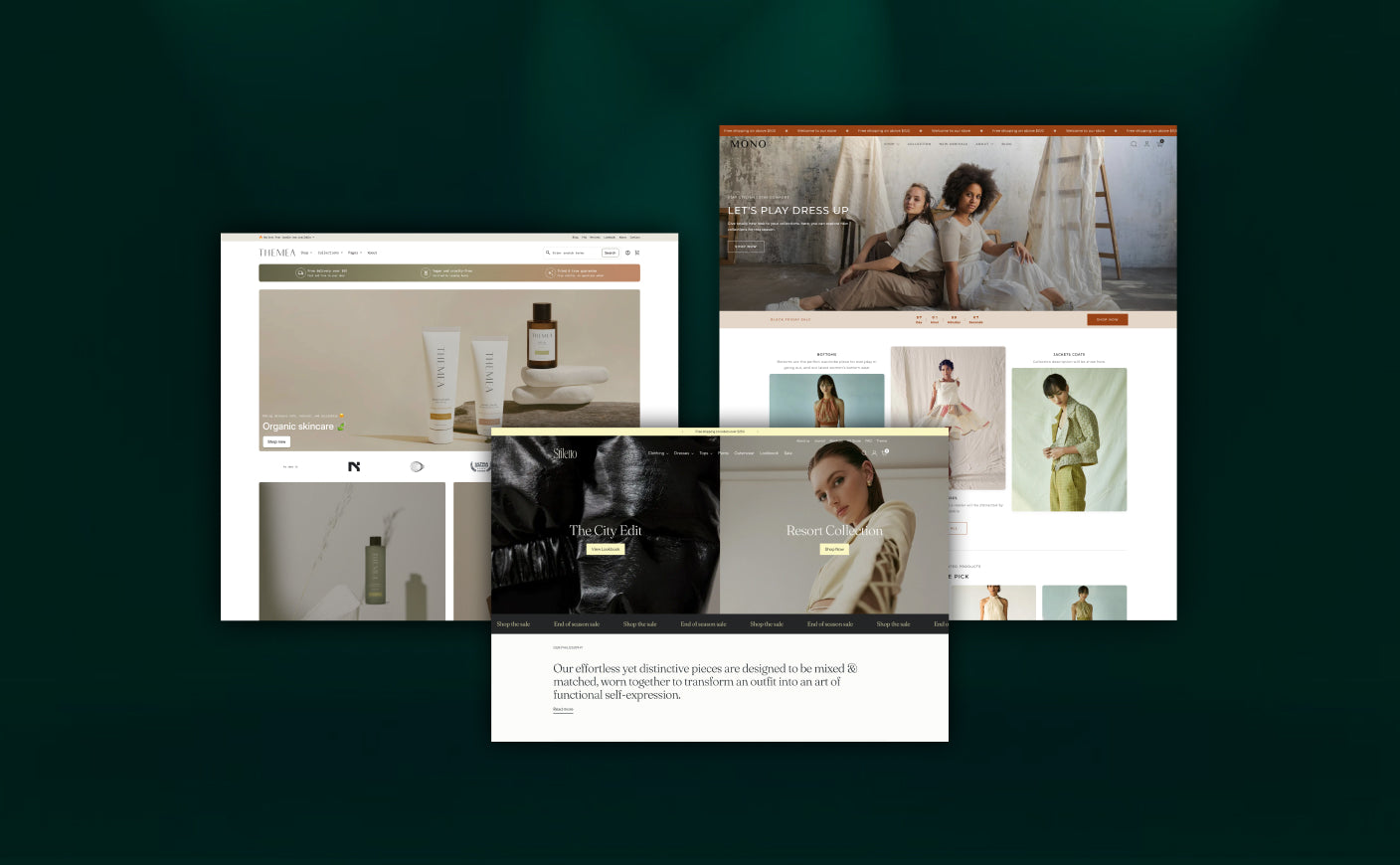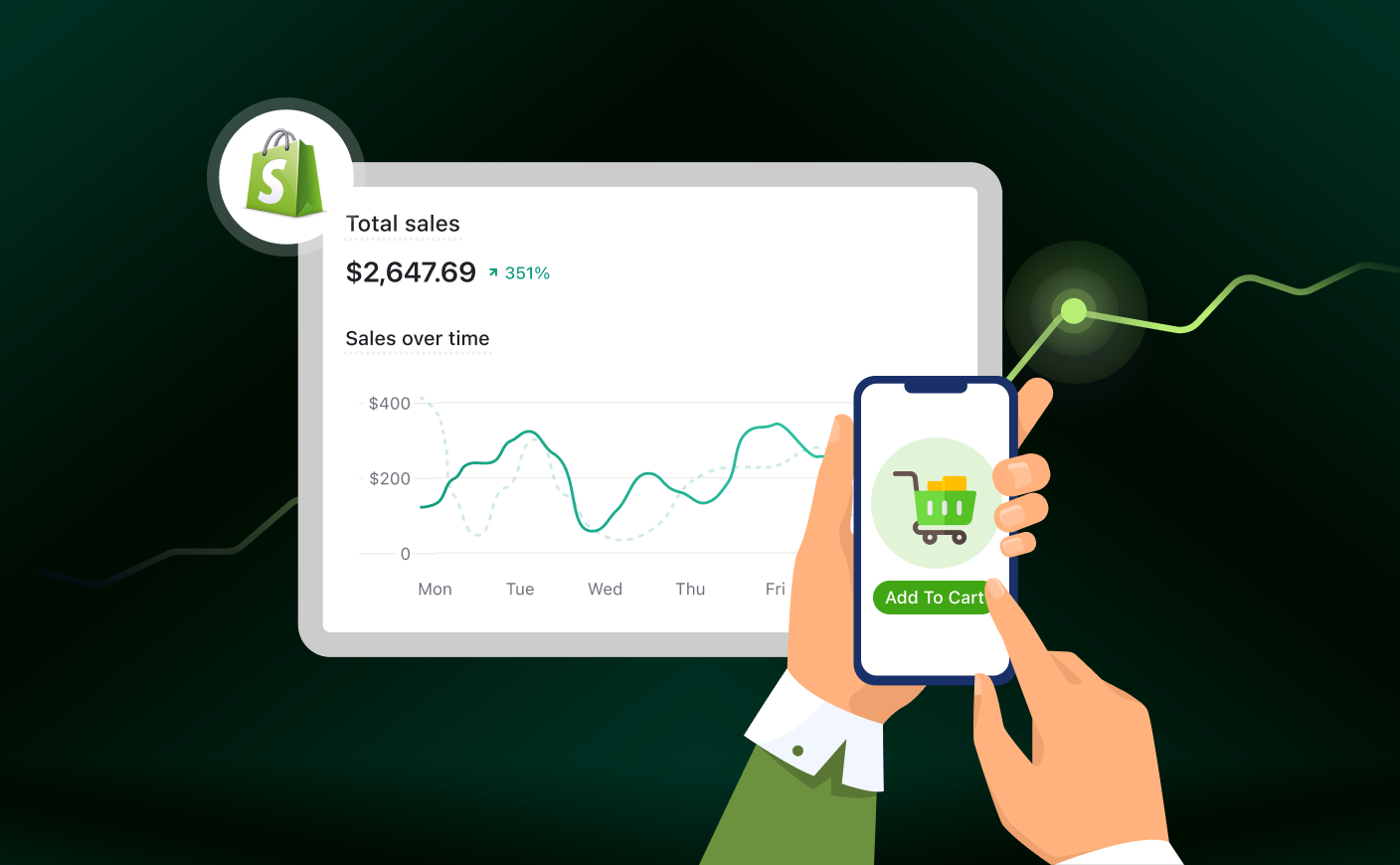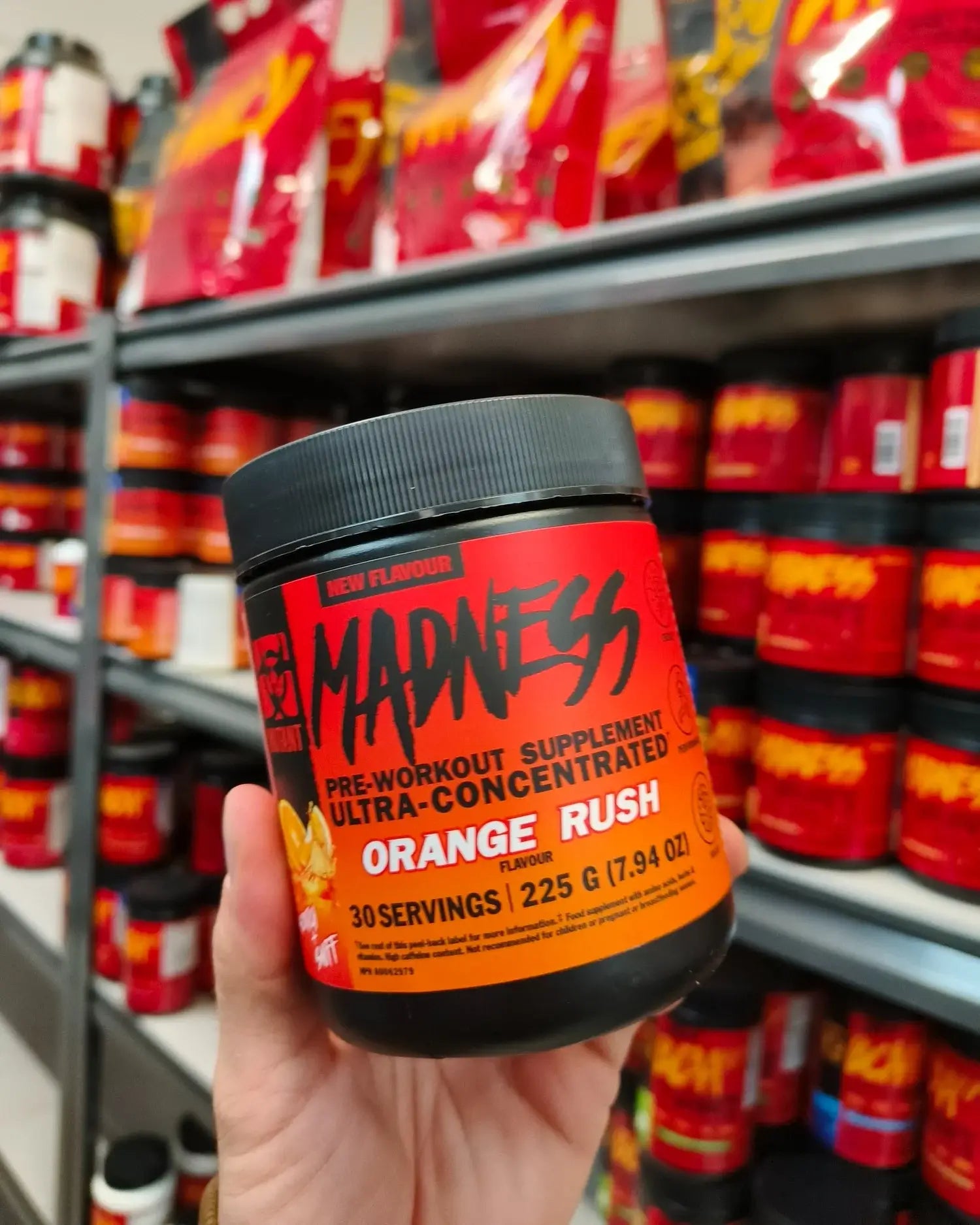Biggest Shopify Store Mistakes New Owners Make
shopify store
shopify store development

The dream of running a successful Shopify store is exciting—launch day feels like a fresh start, full of possibilities. The products are ready, the website looks sleek, and there’s an eager anticipation of that first big sale.
But then, reality hits.
Days go by, and the orders barely trickle in. Doubt starts creeping in. Is something wrong with the business idea? Is Shopify even the right choice?
Here’s the truth—many new Shopify store owners unknowingly make small but costly mistakes that hold them back. It’s not about bad products or a lack of effort; it’s about missing the finer details that turn a store from just another website into a sales machine.
The good news? These missteps are completely avoidable.
Let’s discover the biggest Shopify store mistakes new owners make—so no one has to learn the hard way.
Top 11 Costly Shopify Store Mistakes You Should Avoid
A Shopify store doesn’t fail overnight. It’s a slow leak—a mix of hidden costs, overlooked features, and misguided decisions that quietly drain revenue, frustrate customers, and stunt growth.
Most guides on this topic barely scratch the surface. They tell you to "improve product descriptions" or "speed up your Shopify site"—but those are just the basics. If you’re serious about running a highly profitable Shopify store, you need real, insider insights that go beyond generic advice.
This guide will uncover the 11 most costly mistakes that new Shopify store owners make—and how to fix them before they cost you thousands of dollars.
#1 Choosing the Wrong Shopify Plan (And Bleeding Money Without Realizing It)
Most new Shopify merchants opt for the basic plan of Shopify thinking they are saving money. But here is something most people miss out on:
- Shopify charges transaction fees (2.0% on Basic, 1.0% on Shopify, 0.5% on Advanced) if you don’t use Shopify Payments.
- If you process $50,000/month in sales, you could be losing $1,000+ per month in unnecessary fees—all because you picked the wrong plan.
So what exactly is the solution?
- Make sure that you properly run your numbers before choosing a plan. Ensure that you include factors such as transaction fees, payment gateways, and expected sales volume before making a definite decision.
- If you're scaling fast, Shopify Plus might actually save you more in transaction fees than it costs.
#2 Using Default Shopify Product Pages Instead of High-Converting Custom Pages
The default product pages offered by Shopify are designed for simplicity, not for bringing sales. If you are running ads on those pages, you are simply burning your precious money.
So what exactly is missing on those pages?
- No psychological triggers (social proof, urgency, scarcity)
- No video testimonials to build trust
- Weak CTA placement that doesn’t guide buyers
What is the solution?
- You can use PageFly or GemPages to build custom landing pages that increase conversions by 2-3x.
- Try including countdown timers, dynamic CTAs, and real customer reviews to make your pages persuasive, not just functional.
#3 Ignoring Mobile Optimization (70% of Your Traffic is Mobile!)
Most Shopify themes work pretty amazing on websites but are very difficult to navigate on mobile phones. If this is the case, you can expect:
- High bounce rates
- Abandoned carts
- Poor Google rankings
So what is the fix?
- You can use heatmaps (such as Hotjar or Lucky Orange) to check how mobile users are interacting with your Shopify store.
- Try adding sticky add-to-cart buttons so customers don’t have to scroll to buy.
- Reduce image sizes for faster mobile loading speeds.
#4 Having a Slow Website That Frustrates Customers (And Google!)
A slow loading website can significantly harm your revenue. Studies indicate that a one-second delay in mobile page load can reduce conversions by up to 20% (source: googlebusiness).
Furthermore, pages that loaded in 3.3 seconds had a 0.9% conversion rate, while those at 5.7 seconds dropped to 0.6%. (source: huckabuy).
So what is the fix?
- Optimize Images: Large image files can slow down your site. Try using tools like TinyPNG to compress images without degrading quality.
- Choose a Fast Theme: Opt for performance-optimized themes like Shopify's Online Store 2.0 themes, which are designed for better speed.
- Limit Apps and Scripts: Excessive apps can bloat your site. Regularly audit and remove unnecessary apps to streamline performance.
- Implement Lazy Loading: Delay loading non-essential images and videos until they're needed to improve initial load times.
- Enable Browser Caching: Store static files locally to speed up load times for returning visitors. Adjust caching settings via Shopify or modify them directly in your theme's code.
#5 Complicated Checkout Process (Where Most Abandon Carts!)
Studies have shown that 22% of U.S. online shoppers have abandoned an order in the past quarter solely due to a "too long or complicated checkout process.” (source: baymard)
Additionally, 21% of shoppers have abandoned a site due to complicated or lengthy checkout experiences. (source: dynamicyield)
So what is the solution to avoid a complicated checkout experience?
Minimize Form Fields: Keep only the necessary fields, enable autofill, and use address suggestions to speed up the process.
Show All Costs Upfront: Clearly display shipping, taxes, and fees before checkout to avoid last-minute surprises.
Enable Guest Checkout: Don’t force account creation—let customers check out quickly without signing up.
Simplify Navigation: Reduce steps, remove unnecessary clicks, and ensure a smooth experience.
Optimize for Mobile: Ensure the checkout process is mobile-friendly with an easy-to-use design.
#6 No Post-Purchase Upsells (Leaving Free Money On The Table)
Many Shopify merchants think their task is over once a customer completes the transaction. That can be a huge mistake.
If leveraged properly, the post-purchase phase can prove to be a goldmine for increasing revenue and securing repeat business.
Let’s see how:
Use ReConvert for Smart Upsells
ReConvert lets you add high-converting upsell offers on the Thank You page, leveraging a customer’s buying momentum. Some popular features include:
- One-Click Upsells – This primarily includes giving out offers such as “Buy another at 30% off” right after checkout.
- Customizable Thank You Page – You can add product recommendations, surveys, and timers for creating an urgency.
- Data-Driven Optimization – You can also track conversions and tweak your strategy for better results.
One-Time Discount on the Thank You Page
A limited-time discount (e.g., “10% off your next order—valid for 24 hours!”) encourages customers to buy again immediately. Try this simple tricks:
- Increases repeat purchases by creating urgency.
- Builds customer loyalty by rewarding buyers.
- Increase lifetime value (LTV) without additional ad spend.
#7 Not Using Email Marketing (Your Most Profitable Channel)
Most Shopify store owners focus on Facebook and Google Ads for instant sales. But what they don’t realize is that email marketing can generate a higher ROI than any paid traffic source. It has the potential to consistently generate revenue without ongoing ad spend.
What is this fix?
Go Beyond Shopify’s Default Abandoned Cart Email
Shopify’s basic abandoned cart email is too generic and doesn’t maximize recovery rates. Instead, create a multi-step email sequence to bring back lost shoppers:
- First Email (30 min after abandonment): Send a friendly reminder with product images and a clear CTA (“Come back to your cart!”).
- Second Email (12–24 hours later): Add urgency with a time-sensitive discount (“Complete your order in the next 6 hours and get 10% off!”).
- Third Email (48 hours later): Add social proof—highlight customer reviews, testimonials, or FAQs to address doubts.
- Fourth Email (72 hours later): Last-chance reminder with a countdown timer or free shipping offer.
Tip: Use tools like Klaviyo, Omnisend, or Privy to automate these flows with smart segmentation.
Set Up a Post-Purchase Email Flow for Repeat Sales
A customer who just bought from you is the most likely to buy again—but most brands fail to capitalize on this. Here’s how to keep them engaged:
- Order Confirmation (Instantly) – Go beyond a standard receipt; add product usage tips, brand storytelling, or a warm thank-you message.
- Follow-Up (3–5 Days Later) – Check in! “How’s your [product name] working for you? Here’s how to get the best out of it.”
- Cross-Sell / Upsell (7–10 Days Later) – Offer complementary products based on their purchase history.
- Loyalty Incentive (2 Weeks Later) – Introduce a VIP discount or rewards program to encourage long-term engagement.
Also read: Boost loyalty with Shopify plus loyalty and personalization
Why does this strategy work?
- Email is owned media—unlike ads, there’s no extra cost per customer.
- Automated sequences bring in consistent sales on autopilot.
- Personalized email flows increase customer lifetime value (LTV) and brand loyalty.
#8 Poor Inventory Management (Either Too Much or Too Little Stock)
We all know that inventory is the backbone of all business. However,
Too much inventory ties up cash that could be used for marketing, product development, or operations.
Too little inventory leads to stockouts, which means lost sales, disappointed customers, and a lower lifetime value (LTV) from repeat buyers.
So what is the fix?
Use Shopify’s Inventory Forecasting Tools
- Shopify offers built-in tools for real-time stock tracking. If your store has a history of sales data, Shopify will provide insights on when to restock, how much inventory to hold, and which items are moving slowly.
- Go to Shopify Admin → Analytics → Reports → Inventory Reports to get data on product sell-through rates and adjust your purchasing strategy accordingly.
Integrate AI-Powered Inventory Management Tools
- Apps like Inventory Planner, Stocky (for Shopify POS), and Skubana provide advanced forecasting models that predict demand based on seasonality, trends, and historical data.
- These tools help optimize stock levels so you never overstock or understock.
Sell Slow-Moving Stock with Bundles Instead of Discounts
Instead of offering steep discounts, bundle slow-moving items with best-sellers to increase perceived value. Example: If a winter jacket isn’t selling, bundle it with a trendy scarf or gloves instead of slashing its price.
Set Up Automatic Restock Alerts
- Use Shopify apps like Stock Sync or Notify Me to get automatic alerts when stock levels drop below a certain threshold.
- If a product is selling fast, prioritize reordering before it’s out of stock.
Negotiate Better Terms with Suppliers
- Work with suppliers to lower minimum order quantities (MOQs) to prevent overstocking.
- Ask for flexible payment terms so you don’t tie up too much cash in inventory.
#9 Running Ads Before Fixing Conversion Issues
There is a common notion that if you manage to drive more traffic to your Shopify store, you will get more sales. But the reality is far away from this.
Most Shopify stores convert at around 2% or less, which means that for every 100 visitors, only 2 make a purchase. If your store has fundamental issues such as slow load times, confusing navigation, weak product pages, or a complicated checkout process - sending paid traffic to it will only drain your budget.
Common signs your Shopify store is not ready for paid ads
Before spending even a dime on ads, check whether your store has the following:
- A clear, engaging homepage that guides visitors toward a purchase.
- High-quality product images & videos that showcase value, not just features.
- Product descriptions that answer objections and highlight benefits.
- Fast load speeds (under 3 seconds on both desktop & mobile).
- A smooth, distraction-free checkout process that minimizes cart abandonment.
Let us now see the fix:
Run Conversion Rate Optimization (CRO) Tests First
- Install Hotjar or Lucky Orange to track how visitors interact with your store.
- Identify where they drop off (checkout, product pages, slow loading times).
- Run A/B tests on key elements like CTA buttons, product images, and pricing to see what increases conversions.
Optimize Product Pages for Maximum Conversions
- Use high-converting product page templates (not Shopify’s default one).
- Add social proof (testimonials, user-generated content, trust badges).
- Use urgency triggers (limited-time offers, real-time purchase notifications).
Speed Up Your Website
- Use Google PageSpeed Insights to check load time.
- Compress images with TinyPNG or Shopify’s Image Optimizer apps.
- Remove unused Shopify apps that slow down performance.
Simplify the Checkout Process
- Enable one-page checkout to reduce friction.
- Offer Shop Pay, Google Pay, and Apple Pay for faster payments.
- Show clear shipping costs upfront to avoid last-minute cart abandonment.
#10 Using the Wrong Pricing Strategy (And Killing Your Margins)
Many new Shopify store owners make the mistake of underpricing products, thinking lower prices will attract more buyers. In reality, this approach can cripple profit margins, make ads unsustainable, and devalue your brand.
Now let's talk about another common mistake? Relying only on cost-plus pricing, which fails to account for perceived value, competitive positioning, and customer willingness to pay. A $20 watch and a $200 watch might cost the same to manufacture, but branding, perceived quality, and customer expectations set the pricing.
We will talk about the solutions now:
Adopt a Value-Based Pricing Model (Not Just Cost-Plus Pricing)
Most new store owners set prices using cost-plus pricing (e.g., "My product costs $10, so I'll sell it for $20"). This method ignores perceived value and market demand. Instead, use value-based pricing, which considers:
- What similar brands charge (market research)
- What customers expect to pay (perceived value)
- How your product solves pain points (differentiation)
Use Price Anchoring to Increase Conversions
Price anchoring is a psychological trick where you present a higher-priced item first to make the next option seem like a better deal.
Example: If you sell a $79 product, create a premium $149 version with added features. Suddenly, the $79 version feels like a bargain, increasing conversions.
Offer Bundles or Subscription Options to Increase Lifetime Value (LTV)
Instead of relying on one-time purchases, increase your customer lifetime value (LTV) with:
Bundles – Group complementary items together and offer at a discounted price to increase value. (Example: A beard grooming kit instead of just a beard trimmer)
Subscriptions – Offer a subscription model using Shopify apps like Recharge or Bold Subscriptions to lock in repeat revenue.
A/B Test Your Pricing
Small price tweaks can significantly impact conversions. Test different pricing structures using Shopify apps like Dexter or Intelligems to find the sweet spot between affordability and profitability.
Also read: A complete guide to split testing your pricing strategy
#11 Ignoring Customer Support (Bad Support = Lost Sales & Refunds)
Many new Shopify store owners focus heavily on acquiring new customers while neglecting the most profitable part of their business—customer retention. A store that provides poor customer support not only loses sales but also suffers from high return rates, negative reviews, and declining brand loyalty.
Bad customer support doesn’t just mean slow responses or rude interactions. It can also be:
- Lack of multiple support channels (forcing customers to email instead of offering live chat, phone, or social media support).
- No self-service options (like FAQs or a knowledge base, leaving customers frustrated over simple issues).
- Inconsistent response times (taking 24-48 hours to reply to customer inquiries can lose you a sale).
- Not proactively addressing concerns (instead of waiting for complaints, businesses should anticipate customer needs).
What are the actionable steps?
Offer Multi-Channel Support
Customers today expect instant help, and if they can’t find a quick resolution, they will leave.
- Add live chat (Tidio, Gorgias, or Zendesk) to answer customer questions in real-time.
- Use social media DMs (Instagram, Facebook, WhatsApp) to handle inquiries where customers are already engaging.
- Implement chatbots for common questions (order status, refund policies, shipping details). This reduces workload while offering instant responses.
For instance, Amazon's “Where’s my order?” bot resolves 80% of customer inquiries automatically, freeing human agents for complex issues.
Automate Order Updates
A major chunk of customer complaints comes from lack of communication about order status. Instead of waiting for customers to ask, be proactive.
- Enable automated SMS & email notifications for order confirmation, shipping updates, and delivery status. Apps like Klaviyo and Omnisend can handle this.
- Add order tracking to your website so customers don’t have to reach out for updates. AfterShip is a great tool for this.
- Offer estimated delivery dates on the product page and checkout to set expectations before the purchase.
For instance, brands like Nike and Apple automatically send SMS/email updates at every stage of shipping. This reduces support tickets by 50% and improves trust.
Reduce Response Times
Customers expect a response within minutes, not hours. If they don’t get help fast, they’ll leave and buy from a competitor.
- Set up an autoresponder for FAQs to provide instant answers (e.g., “Your message has been received! We’ll reply within 2 hours. In the meantime, check our FAQs here.”)
-
Use customer support templates to handle common inquiries faster.
Train a virtual assistant to handle support tickets if you can’t hire full-time support staff.
For instance, Nordstrom guarantees a 10-minute response time via live chat, leading to higher conversions and repeat purchases.
Build a Self-Service Help Center
Many customers prefer to find solutions on their own rather than waiting for support. A well-structured help center reduces customer frustration and cuts down support requests by 30-50%.
- Create an FAQ page with detailed answers to common issues (returns, refunds, shipping, etc.).
- Offer a knowledge base (e.g., tutorials on using products, troubleshooting common problems).
- Add a return/exchange portal so customers can process returns without contacting support.
For instance, Zappos has an extensive self-service help center that makes returns, exchanges, and product questions super easy, reducing their support tickets drastically.
Final Thoughts
Running a successful Shopify store isn’t just about having great products—it’s about mastering the details that drive sales and customer satisfaction. Every mistake, no matter how small, has the potential to impact your bottom line.
The key is to stay proactive, continuously optimize your store, and leverage data-driven insights to refine your strategy. With the right approach, you can turn challenges into opportunities and create a Shopify store that thrives in the long run.
CrawlApps
At CrawlApps, we don’t just build Shopify stores—we create experiences that sell. We’re a bunch of problem-solvers who love turning ideas into stores that actually converts. Whether it’s fixing what’s broken or building something from scratch, we make sure every detail works in your favor. No fluff, no jargon—just real solutions that help your business grow. If you’re serious about Shopify, you’ll feel right at home with us.


